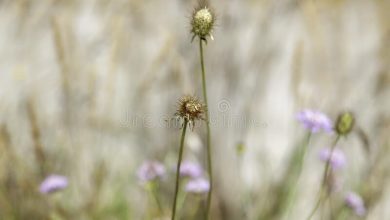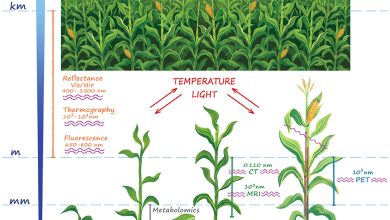Trasdescantia Zebrina: [Cultivation, Care, Pests and Diseases]
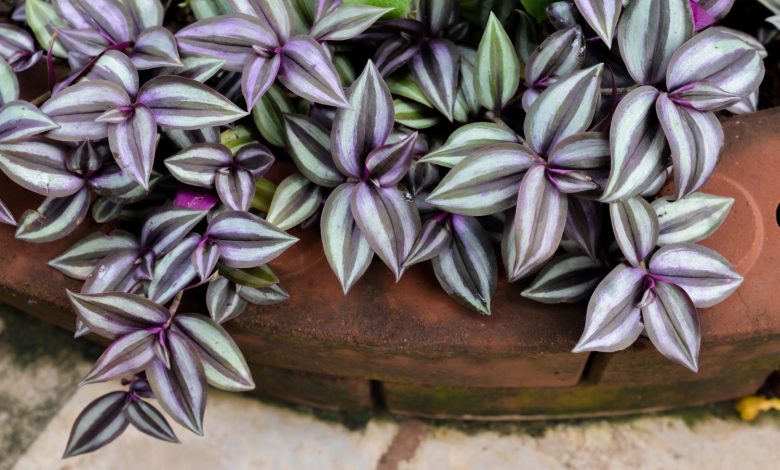
Important points when planting Trasdescantia zebrina
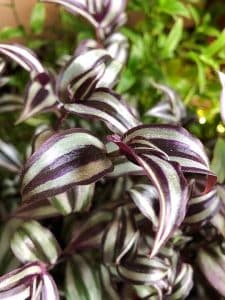 When? The best time to grow and multiply this beautiful plant is spring and autumn.
When? The best time to grow and multiply this beautiful plant is spring and autumn.- Where? It adapts to any external and internal environment, as long as there is enough natural light. Gardens, parks, terraces, balconies, in hanging pots. Survive anywhere.
- How do we prepare the land? A soil rich in organic matter, with good drainage, made up of humus, peat and sand is ideal for this plant that does not require excessive care.
- How do we sow? Directly in the substrate, the cuttings are carefully planted. They can have roots if the stems are previously submerged in water until they sprout and then they are planted.
- How do we pay? Its application should be done every two weeks in spring and 1 every 10 days in winter. A good liquid fertilizer for green plants strengthens roots and stimulates growth.
- When do they bloom? They emit a shy flower, very small, which appears from May and can last until August of each year, in the center of its striking leaves.
- Ideal temperature? It does not require much, but at an environmental level it is essential to avoid exposing it to temperatures below -3ºC. It supports periods of drought, but the very low temperatures do damage it.
- How do we water? With moderation. Twice a week in summer and once every ten days in winter is prudent.
- Diseases and pests? They are very resistant to diseases, but when the heat is very intense they can be attacked by aphids, red spiders and mealybugs.
What is Tradescantia zebrina?
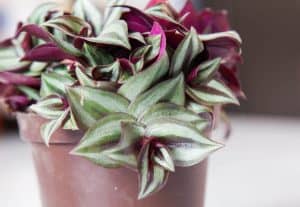 Behind its scientific name, Tradescantia zebrina, there are about 70 varieties of the conmelinaceae botanical family, which are distinguished by the shape and placement of their leaves.
Behind its scientific name, Tradescantia zebrina, there are about 70 varieties of the conmelinaceae botanical family, which are distinguished by the shape and placement of their leaves.
It is also known under the curious name of Amor de hombre. He lives, indistinctly and without many demands, in the garden and inside the house.
It proliferates abundantly in North America, the southeastern United States and Mexico. But it has multiplied throughout the world, given its great adaptability. In Central America and towards the South of the American continent, it abounds in hot and humid places.
These plants have a fabulous power of growth because they grow no more than 30 cm, but they also spread across the width of any garden. It is a plant that does not require much care. Its resistance has made it transcend borders.
It adapts to practically any environment and can be kept in hanging pots inside the house, on a terrace and in the garden. They are also excellent ground cover plants, as they spread very easily.
They create a sort of vegetal carpet with the intense green of their lanceolate leaves tinged with white bands on the sides of the blade and intense green in the central part of the bundle. On the underside, its leaves are a fabulous purple that dominates the scene of its development.
They have a shy flowering. A small pink flower grows no more than 1 cm from the center of three leaves that are grouped at the terminal structure of their stems. They are seen from spring to the end of summer.
Where should we plant the Trasdescantia zebrina?
It is an all-terrain ground cover plant. It lives in hanging pots, on the edge of walls, in gardens, anywhere where they receive a good dose of daily sunlight, outdoors, on a terrace, indoors.
When should Trasdescantia zebrina be cultivated?
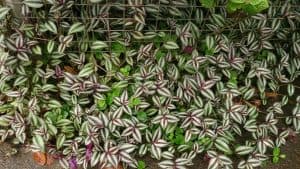 Although it is a perennial plant that can be active all year round, it prefers heat, so it is convenient to plant its shoots and cuttings in spring and early fall.
Although it is a perennial plant that can be active all year round, it prefers heat, so it is convenient to plant its shoots and cuttings in spring and early fall.
In countries with a tropical climate, it can be sown at any time, it does not require any special time because it even adapts perfectly well to periods of drought, it can endure days without water, because its root system is very strong.
How do we prepare the land?
A substrate rich in nutrients, with a preparation that includes peat, mulch and sand in the same proportion, is the best recipe we need so that this plant can grow strong, healthy and with abundant foliage.
How to sow a Trasdescantia zebrina step by step?
Take several cuttings from a mother plant with roots that are in excellent health.
- Place a filter grid in a pot with holes in the bottom and pour about 4 cm of volcanic gravel on top, as it provides porosity and eliminates excess water.
- Prepare the pot with enough prepared substrate and water it. Let it drain, drain because it can’t get soaked. Neither too loose nor compact.
- Each cutting (2-3 in a large pot) must be buried not very deeply in the substrate, taking care that the root disappears from our sight, so that it quickly takes root in 10 days.
- Place the pot on a hanging base, in a semi-shaded place, a cool but well-lit place.
pot change
- If a transplant is made from a pot that has outgrown this beautiful creeping and hanging plant, then the transfer to a larger one must be done with the same procedure, only the amount of substrate that you will add varies, which will be filled at half.
- Immediately, proceed to remove the plant from the previous pot, making circular movements and a slight pressure on the pot at the same time, until the entire plant comes out.
- Transfer to the new pot and water daily so that it does not run out with the change, always making sure that the water reaches the bottom and drains.
What care does Trasdescantia zebrina need?
Lightning
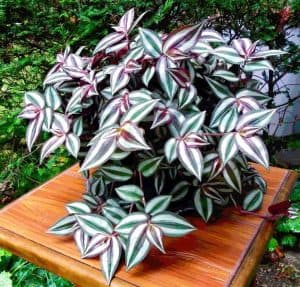 Indirect sun is prudent. Harsh exposure to sunlight greatly affects it, to the point of killing it. But scarcity also harms it.
Indirect sun is prudent. Harsh exposure to sunlight greatly affects it, to the point of killing it. But scarcity also harms it.
Its beautiful leaves will discolor to dryness if we force it to remain under areas that are too exposed during the day.
Sure, it loves sunny days, but its leaves will fade—literally speaking—if it doesn’t get enough sunlight, especially early morning sunlight.
Although it is worth clarifying that enough does not mean excess light. It must be located in a place where the lighting is good, but if it is inclement then its leaves will lose color and beauty.
Temperature
This plant needs to live in hot places. If we expose it to stay in places where there is a drop below 10°C, it can be irreversibly damaged. For this reason, it is better to take it to a semi-shaded place inside the house, especially in countries with severe winters.
Irrigation
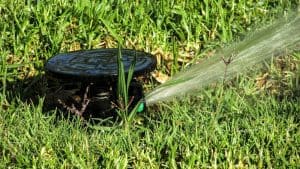 At the particular point of irrigation all varieties of Tradescantias are very delicate.
At the particular point of irrigation all varieties of Tradescantias are very delicate.
Another key to keeping it bright and copious throughout the year is to water only after the substrate has dried.
It is recommended to water it twice a week in summer and once every 10 days in winter. Furthermore, in pots, an excellent water drainage system must prevail. Excessive watering rots the roots. Therefore, the container substrate must contain.
Pass
Another excellent recommendation is to stimulate its growth with a good organic fertilizer or liquid fertilizer for green plants, every 15 days, in spring, because the plant will be in full growth at that time. And in the rest period, pay every three weeks to keep it.
Pruning
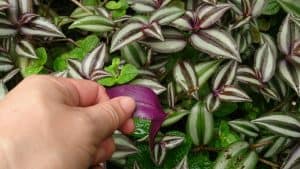 It is very healthy to help it maintain its vegetative vigor with spaced pruning of dry and damaged parts. This should not be exaggerated either.
It is very healthy to help it maintain its vegetative vigor with spaced pruning of dry and damaged parts. This should not be exaggerated either.
Its roots are very prolific and expand everywhere, but if we do it at ground level we do not affect its expansion.
Those varieties that withstand harsh winters need a stimulating pruning that always gives new strength to resprout in spring.
Multiplication
It reproduces very easily by cuttings that are planted directly in the soil or substrate, throughout the year. Another simple way is to submerge them in water until the first roots come out
That is why it is always convenient to cut the leaves that are damaged in the lower part, because with that roots are stimulated and it continues to expand in gardens and pots, because they take root easily in the stem nodes.
What pests and diseases attack Trasdescantia zebrina?
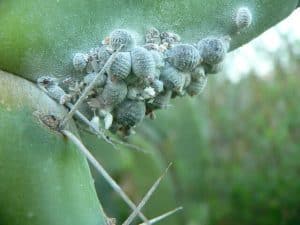 Aphids, mealybugs and red spiders are three of the insects that have the most presence in the intricate creeping foliage of this beautiful plant. Snails are also unwanted visitors.
Aphids, mealybugs and red spiders are three of the insects that have the most presence in the intricate creeping foliage of this beautiful plant. Snails are also unwanted visitors.
It is necessary to check, especially in hot summers, in order to detect any unwanted visit in order to be able to combat it well in advance and avoid greater evils.
Bibliography and references
- Rubio Coll, Mireia; Fernandez Terricabras, Mireia. (2018). The Big Book of Indoor Plants. Parkstone International. New York, USA.
- Bailey, Frank. (2020). The healing power of indoor plants. RBA Books. Barcelona, Spain.
- Mioulane, Annette; Mioulane, Patrick. (nineteen ninety five). Indoor plants. Publisher DeVecchi. Barcelona, Spain.
- Sanchez de Lorenzo Caceres, Jose Manuel. (2004). The species of the genus Tradescantia cultivated in Spain. PARJAP Magazine. Bulletin of the Spanish Association of Parks and Gardens. Madrid Spain. Reproduced from: https://www.researchgate.net/profile/Jose_Sanchez_De_Lorenzo_Caceres2/publication/267682939_LAS_ESPECIES_DEL_GENERO_TRADESCANTIA_CULTIVADAS_EN_ESPANA/links/571a639908ae408367bc8af2/LAS-ESPECIES-DEL-GENERO-TRADESCANTIA-ESPANADAS.pdf

![Photo of Ceibo: [Cultivation, Irrigation, Care, Pests and Diseases]](https://www.complete-gardening.com/wp-content/uploads/2022/08/ceibo-cultivation-irrigation-care-pests-and-diseases-390x220.jpg)
![Photo of Aloe Vera: [Planting, Care, Irrigation, Substrate and Pests]](https://www.complete-gardening.com/wp-content/uploads/2022/08/aloe-vera-planting-care-irrigation-substrate-and-pests-390x220.jpg)
